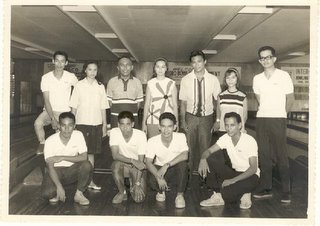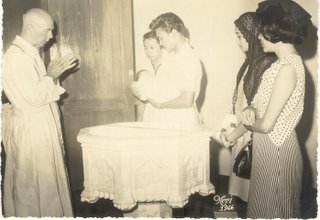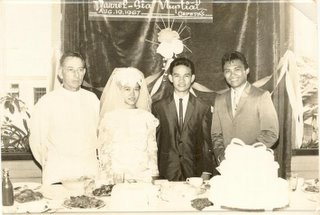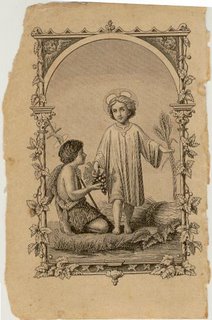 Before the era of multi-million dollar purses, coupled with equally astronomical PPV deals, another world champion boxer from Mindanao started his pugilistic arts not very far from the inauspicious origins of the current boxing idol. This unassuming, though quite strapping and muscular, guy started honing his boxing skills in the town of Marbel, north of General Santos, but still within the Cotabato region.
Before the era of multi-million dollar purses, coupled with equally astronomical PPV deals, another world champion boxer from Mindanao started his pugilistic arts not very far from the inauspicious origins of the current boxing idol. This unassuming, though quite strapping and muscular, guy started honing his boxing skills in the town of Marbel, north of General Santos, but still within the Cotabato region.This boxer who carried the name of Ireneo Barrientos, but shortened to Rene Barrientos as an appropriate boxing handle, lists his birthplace as Balite, Aklan, in the Visayas Region. It can be surmised that not unlike many of the Christian residents of the Cotabato region which has been traditionally and predominantly Muslim, Rene’s family resettled in the area. Which place had been renowned for holding alluring promises for those who dared. The tempting enticements of a very hospitable climate, fertile agricultural lands and enviable homesteads, which had earned the huge Cotabato basin the distinction of being the rice granary of the entire country.
In October 10, 1962, Rene made his first professional fight in Cotabato knocking out a fighter named Charlie Kid in two rounds.
Of his 48 professional fights, this would be the only one held in Cotabato, because after this he was ready to move on to bigger places and greater heights.
He moved to the Northern Mindanao city of Cagayan de Oro to be managed by one of its more popular boxing enthusiasts, Dodong Almirante. This partnership would lead Rene to a world championship and beyond.
Standing at about 5’7” and fighting at a comfortable 130 lbs, (ideal for a junior lightweight or super featherweight), Rene in many ways then was also like Pacquiao. Add to that the fact that he was also a southpaw with a very mean left.
Though maybe minus the extravagant financial rewards now very common among boxing champions, Rene took hold of his highest crowning glory by grabbing the vacant WBC Super Featherweight Word Championship in a bruising 15-rounder that ended in a unanimous decision. This was against a fighter named Ruben Navarro in front of a hometown crowd in Manila, on the 15th day of February, 1969.
Though nothing compared to the frenzy and mania created by the latest Pacquiao conquest, the nation was nevertheless ecstatic for having a world champion.
Unfortunately, about a year later, Rene lost that title to a Japanese fighter named Yoshiaki Numata on a split decision and under a fight that was held in Tokyo, Japan on April 4, 1970. Many would claim that it was a hometown decision, and unfortunately during those years, Japanese officials were notorious for being partial to their fighters.
Though stripped of his rightful crown, Rene would continue to fight until the 70’s, already into his 30’s, and losing only one more fight, again on a split decision. And you guessed right. To another Japanese boxer in another Japanese venue. But the chance for another world title never showed up again.
Today, Rene continues to live with his family in Cagayan de Oro, ensconced among many friends who have stayed loyal to him all these years.
Look him up, if perchance you find yourself in the very hospitable gateway to Northern Mindanao. And see how he sizes up with the current idol.
Rene among friends in his adopted hometown: (CLICK ON THE PICS TO ENLARGE)



